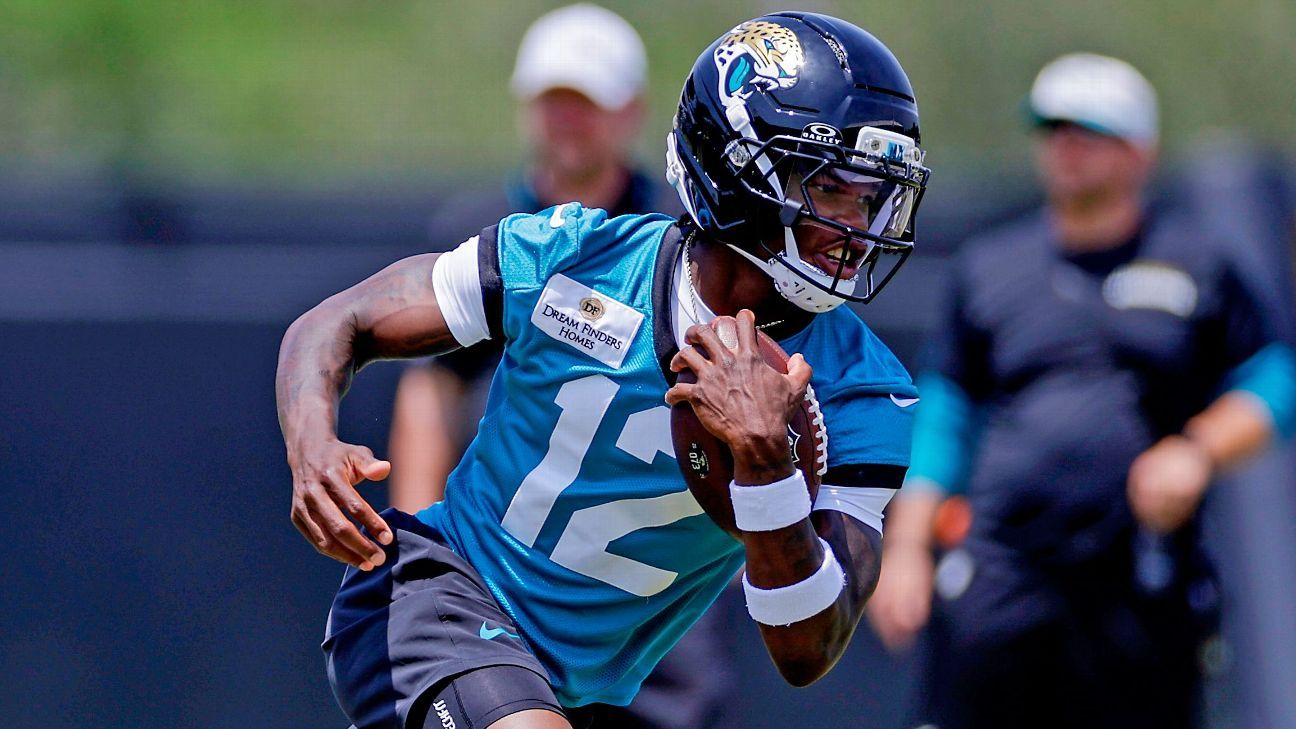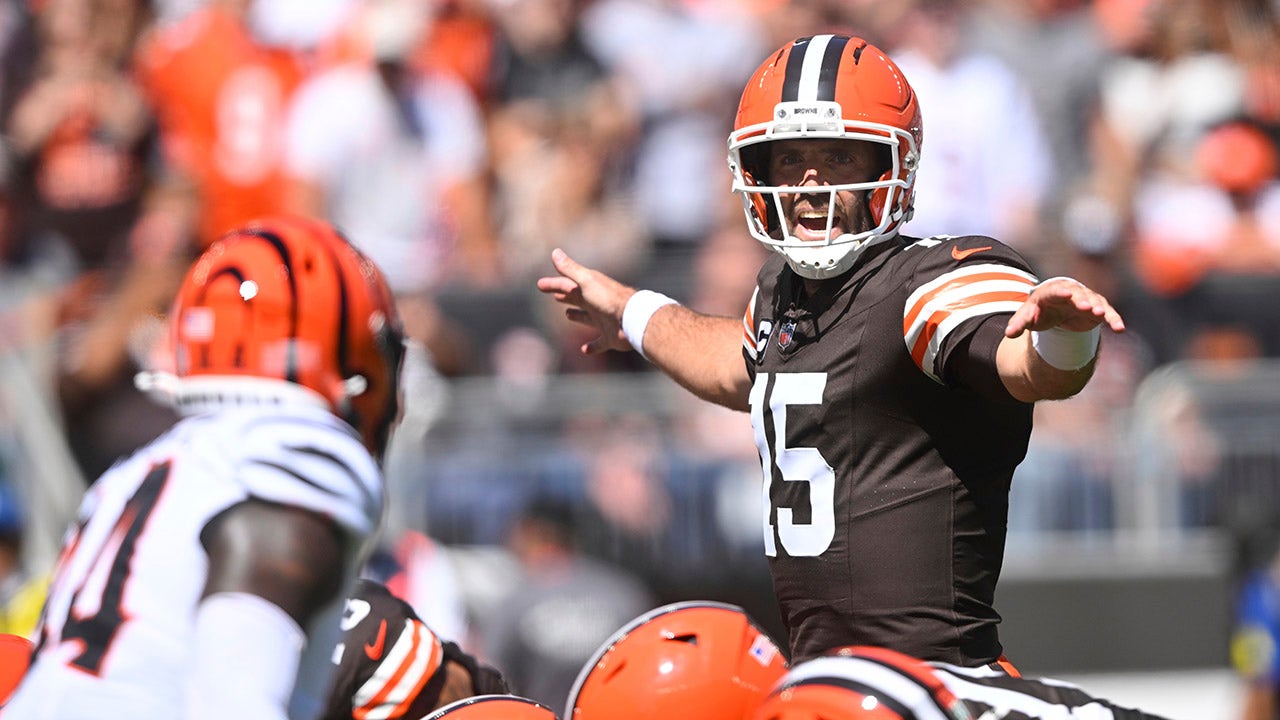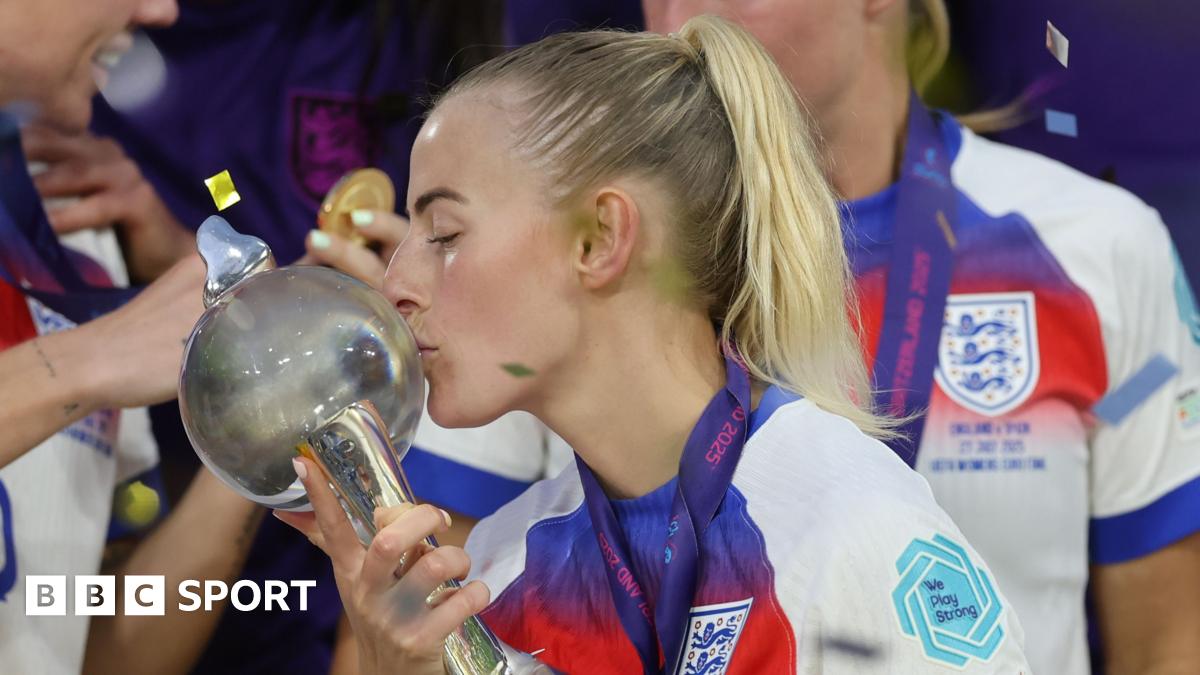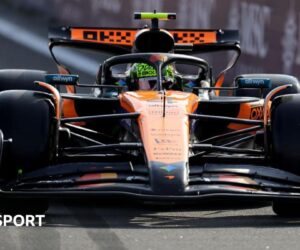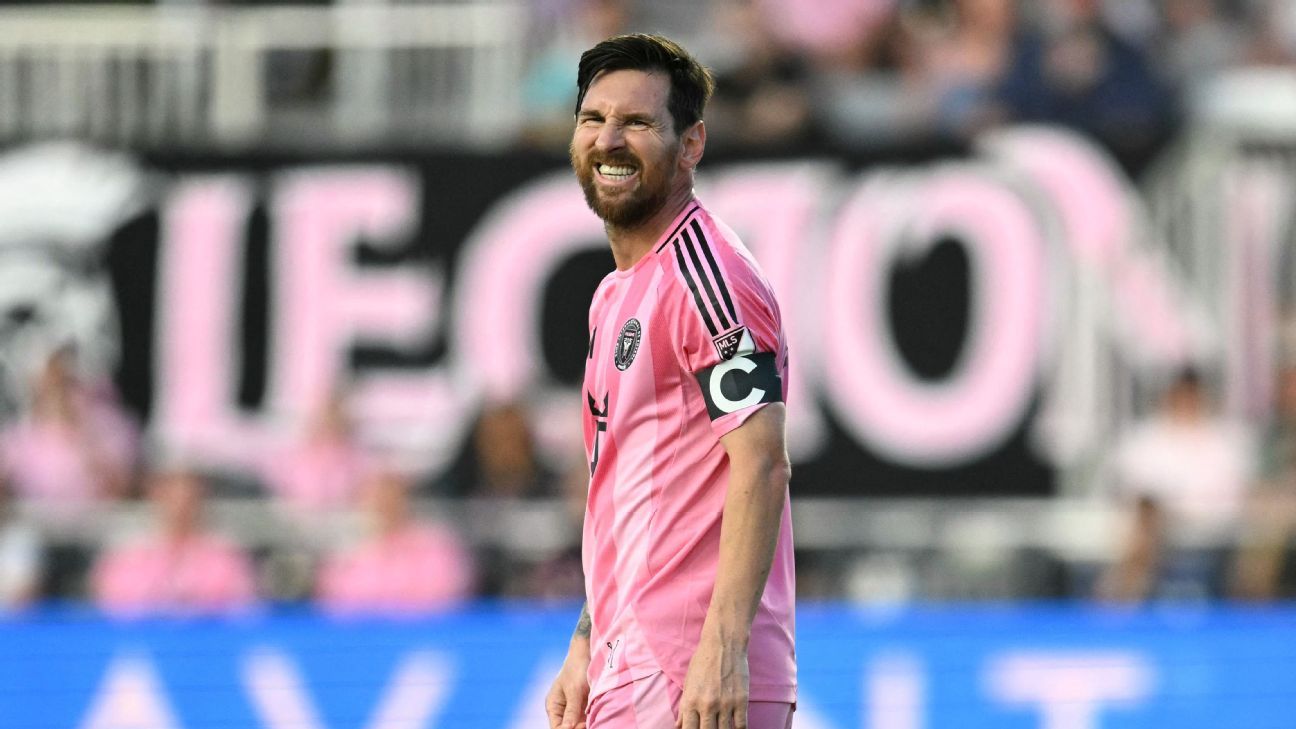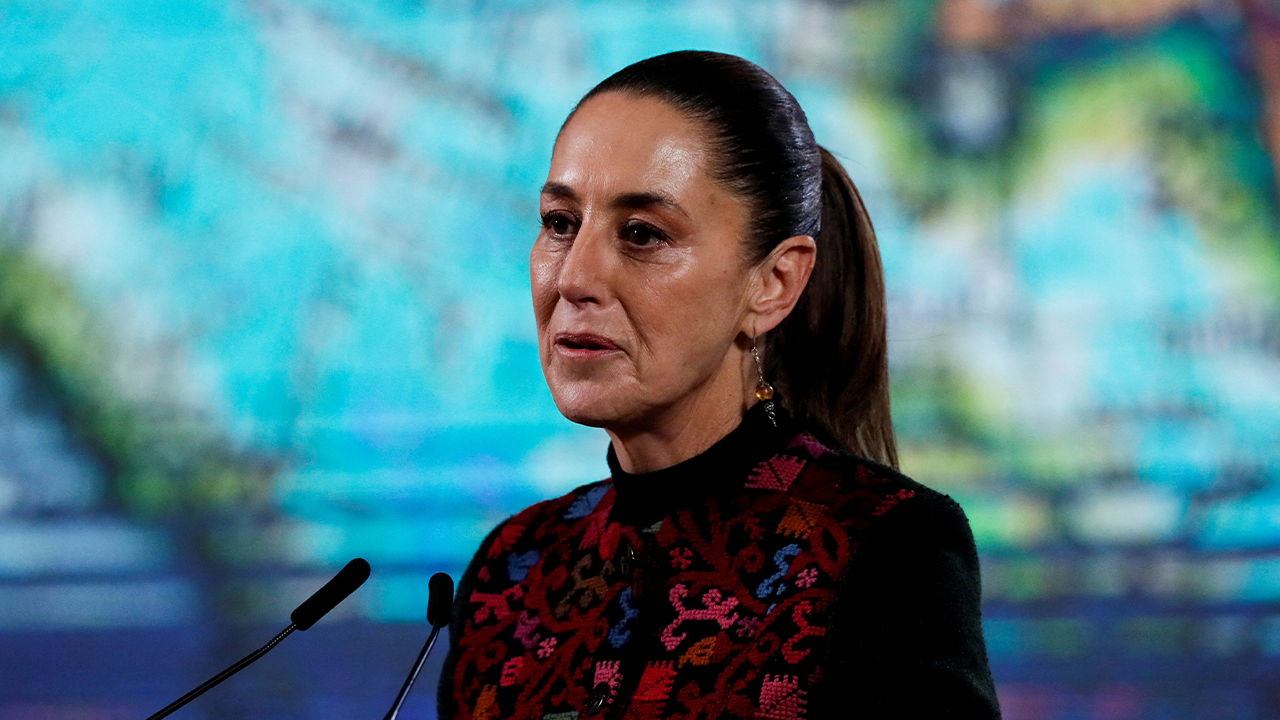The Jacksonville Jaguars say they have a plan for hybrid rookie superstar Travis Hunter, and it appears they intend to use him on both sides of the ball. Hunter, who won the Heisman Trophy at Colorado last season for his work at wide receiver and cornerback, has primarily practiced with the Jaguars’ offense so far this offseason. But he’s also getting in some practice work with the defense, and he’s going to offensive and defensive meetings, as well.
Given the price the Jaguars paid to move up — basically two first-round picks and a second-round pick — and select Hunter No. 2 in last month’s draft, it has been clear for a while that they see him as a player who can contribute in multiple ways on a potentially unprecedented level. And if Hunter is the player the Jaguars imagine he can be for them, it would raise interesting issues in future years regarding how he gets paid.
The NFL’s collective bargaining agreement has specific rules governing things like performance-based pay, contract incentives, franchise-tag designations and fifth-year options. But how well did the CBA’s rules anticipate a player seeing a substantial number of snaps on each side of the ball? What might this mean for Hunter’s future earning potential, even though a drafted player can’t negotiate a new deal until after his third NFL season and we don’t know what the landscape will look like three years from now?
We dug into the CBA’s language and called some salary cap experts around the league to discuss Hunter’s unique situation. Here’s what we found.
Jump to more on Hunter’s potential …
Performance-based pay
Fifth-year option, tag money
Contract incentives

Performance-based pay
Playing on both sides of the ball would help Hunter significantly in the NFL’s performance-based pay system (PBP), which is designed to augment player salaries by giving out bonuses in the offseason tied to playing time from the previous season. Each team gets a set pool of money for performance-based pay bonuses (it was $14.128 million per team this past year), and the money is divvied up according to a formula that involves the player’s salary, signing bonus proration, other bonuses and playing time.
The formula is complicated, but CBA Article 28, Section 5(a) says each player’s playtime percentage is determined by “adding the player’s total plays on offense or defense, as appropriate, plus special teams and (ii) dividing that number by the total plays of the player on the team’s roster with the most combined plays on offense, defense and special teams for that Club.”
So, to use a newsy example, San Francisco 49ers quarterback Brock Purdy’s 2024 compensation for PBP purposes was $1,238,073. His combined snaps on offense and special teams (he didn’t play on special teams, but that’s how the formula works) were 81.3% of the total snaps played by the 49ers player with last season’s highest overall snap count, guard Dominick Puni. That resulted in a performance-based bonus of $857,842.49 for Purdy this offseason — the 16th-highest number in the league. In contrast, 49ers linebacker Dre Greenlaw, whose compensation for PBP purposes was $9,191,206 but played only 3% as many snaps as Puni, got a performance-based pay bonus of just $4,284.28.
Now, what jumped out from the formula was that “or” between the words “offense” and “defense.” We wondered if that meant it had to be one or the other, but in consulting with various NFL team cap personnel and other cap experts, we determined it does not. For example, Scott Matlock is a Los Angeles Chargers fullback who also played on the defensive line last season. He got $645,902.08 in performance-based pay after making $1,263,153 in 2024 compensation. Running his numbers through the formula, he could only have attained that figure by counting all of his 361 offensive snaps, 137 defensive snaps and 231 special teams snaps.
So yes, any snaps Hunter plays on defense would be added to his offensive and special teams snaps for purposes of these calculations next season (and in future years). Predicting just how lucrative that will be is difficult, though, because it’s tied to how much everyone else on the team plays and their respective salaries.
But let’s assume Hunter plays enough to be the Jaguars’ Dominick Puni — the player with the most overall snaps of anyone on the Jacksonville roster — and project next year’s PBP pool at around $16 million per team (based on annual increases to that number in recent years). In that case, factoring in his $840,000 first-year salary and the proration of his $30,566,628 signing bonus, Hunter could be in line to pocket an extra $300,000 or $400,000 next offseason.
For context, last year’s No. 2 pick — Washington quarterback Jayden Daniels — played in 84.8% of his team’s combined offensive and special teams snaps and earned $177,324.77 in performance-based pay. And remember, the Jaguars have no reason to limit Hunter’s snaps to avoid a higher performance-based payment; the PBP pool is set and equal for every team, and every team is required to spend it all.
The fifth-year option and franchise/transition tags
As with all first-round picks, Hunter’s contract will include a team option for a fifth season. That option has to be exercised by the first week of May following his third season. So in his case, the Jaguars would have to decide by May 2028 whether to pick up his option for the 2029 season.
The amount of the option is determined by play time and Pro Bowl selections in a player’s first three years, and it varies by position. For this year’s group — 2022 first-round picks with options for 2026 — the top cornerback option number was $20.187 million, while the top wide receiver number was $23.959 million. (The franchise tag numbers for those positions were the same as the top fifth-year option numbers this year.)
We don’t know for a fact that the gap between the cornerback number and the wide receiver number will be the same three years from now, but if Hunter were facing the option or the tag this year, he’d certainly much prefer to be classified as a wide receiver than a cornerback. The thing is, he wouldn’t get to make that choice.
Article 10, Section 2 of the CBA expressly states that a franchise player’s tender will be determined by “the position at which the Franchise player participated in the most plays during the prior League Year.” Article 7, Section 7 states that the player’s fifth-year option status will be determined by the position at which he participated in the most plays during his third league year. So if Hunter were to play, for example, 400 snaps at cornerback and 399 at wide receiver in 2027, his fifth-year option would be for the cornerback salary. The same thing goes if he had the same split in the final year of his contract and the Jaguars chose to franchise him.
“In that case,” said one cap expert who works for an agency, “they could do what the Ravens did with Judon.”
The example in question is that of Matthew Judon, the edge rusher who was designated a franchise player by the Baltimore Ravens in 2020. Because the 2019 Ravens played a 3-4 defensive front instead of a 4-3, their edge rushers were technically outside linebackers and not defensive ends. This mattered to Judon because the franchise tag for linebackers at that time was $14.808 million and the defensive end tag was $18.808 million. (This is a flaw, of course, in the franchise tag system, which would be fairer if it grouped all such players into a single “edge rusher” category, but we digress.)
The Ravens eventually compromised with Judon and signed him to a one-year contract worth $16.808 million — the midway point between the two numbers. They didn’t have to do this, but it was a way of making the player happy and getting him to sign, and any similar hypothetical future dispute with Hunter could theoretically be resolved the same way by the Jaguars.
Contract incentives
If Hunter plays significant snaps on both sides of the ball, he and his agents could have some fun trying to build incentive clauses into his second contract once he’s extension-eligible after the 2027 season. The CBA is very specific about what kinds of incentives can be included in player contracts (i.e., the sort of team and individual achievements they can be based on). Article 13, Section 6 of the CBA includes the following passage:
“Any player whose primary position is on offense cannot have an incentive bonus that depends on team performance on defense (or special teams), unless such player played in 15% or more of the Club’s defensive (or special teams) in the prior season (pro rating participation in the event of games missed due to injury). Any player whose primary position is on defense cannot have an incentive bonus that depends on team performance on offense (or special teams), unless such player played in 15% or more of the Club’s offensive (or special teams) plays in the prior season (pro rating participation in the event of games missed due to injury).”
1:44
Travis Hunter ready to take the NFL by storm with the Jaguars
Check out the reasons Travis Hunter can be a superstar in the NFL.
So, while the CBA would allow a player contract to include an incentive bonus tied to his team finishing, say, top 10 in the league in fewest yards allowed on defense, an offensive player could not get such an incentive in his contract. However, Hunter — assuming he played 15% of the team’s defensive plays in addition to his offensive contributions the season before his extension — would be an exception.
As for individual incentives, the CBA allows for bonuses to be tied to any number of achievements — rushing yards, receiving yards, rushing touchdowns, interceptions, sacks, you name it. It does not specifically say an incentive for combined rushing and receiving yards could be included, yet multiple experts on both the team and agent sides we consulted said that is common practice. It’s also possible incentives could be built based on combined offensive and defensive playing time, or for winning both or either Offensive and Defensive Player of the Year.
“What’s interesting is you can’t usually tie an offensive category to a defensive player and vice versa, without it being LTBE,” one of our team cap experts said. “But in [Hunter’s] case, I guess you can argue he plays both.”
LTBE is short for “Likely To Be Earned,” which is an important category in contract incentives in the NFL. If an incentive is characterized as “Not Likely To Be Earned,” or NLTBE, the team is not required to count that number against its salary cap (until it is earned, at which time the amount gets deducted from the cap the following year). If the incentive is LTBE, the team must include its value in the player’s cap number. Generally, it’s easy to determine which incentives are which. If the player or team accomplished the feat the prior season, it’s LTBE; if they didn’t, it’s NLTBE. That’s why we see teams put in incentive bonuses tied to a player getting, say, eight sacks in a season when he had only seven the year before. It allows the incentive to be classified as NLTBE and not counted against the cap.
The CBA also states that as many as eight NLTBE incentive clauses can be included in a contract, and if you go over that number, any incentives but the eight with the lowest dollar values attached to them have to be counted as LTBE. The CBA does not appear to include a limit on LTBE incentives, but teams tend to limit them because they have to count them against the cap.
So with all this context, it could be interesting to see how creative the Jaguars will or won’t let Hunter and his agents get when trying to put incentives in his next deal. They could create combinations that wouldn’t make sense for any other player — stuff like an extra $1 million if he has eight receiving touchdowns and eight interceptions in the same season. But it could be a lot more complicated for a player who has compiled major statistical accomplishments on both sides of the ball to get a team to agree to incentives they have to count as Likely To Be Earned.
Hunter potentially projects as a unique player in NFL history. Who knows … maybe he won’t play significant snaps on both sides of the ball. But it sure seems like he wants to, and that the team that drafted him is open to it. If he does, and if he plays the way he played in college, we could be looking at the NFL’s version of Shohei Ohtani, the star pitcher/slugger who cashed in on his dual talents with a 10-year, $700 million contract when he signed with the Los Angeles Dodgers in free agency two winters ago.
Major League Baseball has no salary cap, so it’s obviously not as simple as adding a top-five wide receiver salary (currently $32 million or more per year) to a top-five cornerback salary (currently $21 million or more per year). But the Jaguars — or whoever eventually signs Hunter as a free agent — could be confronted with the challenge of having to build a contract, within the league’s CBA and salary cap parameters, that pays him as two players in one. Heck, by the time he’s up for a new contract, the league and the players could be negotiating a new CBA and making changes to account for possible future Travis Hunters.
It’s all very fun to think about, even if we’re only a few weeks into the Hunter two-way experiment. He could end up being a game changer in more ways than one.

